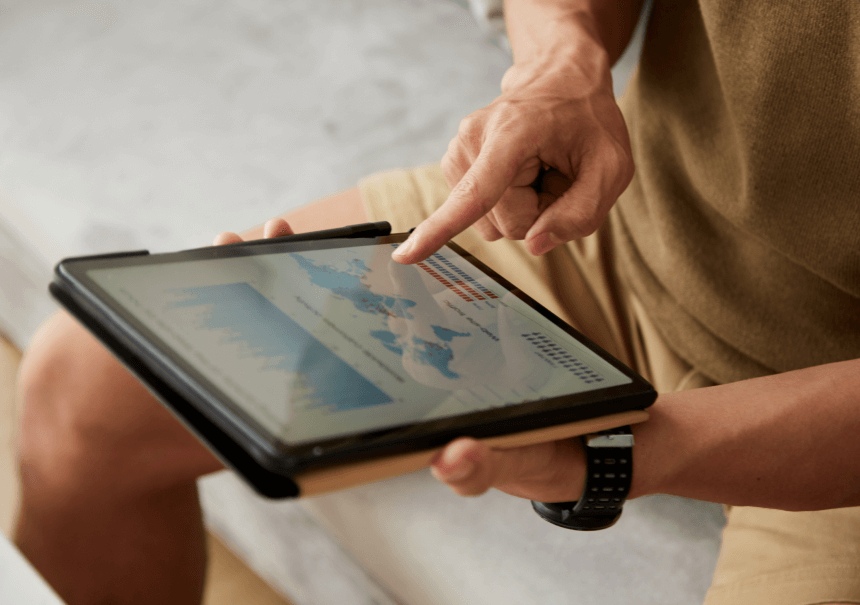How to implement omnichannel effectively: 5 practical examples

Omnichannel is a strategy for almost any company operating at least partially online. Implementing this approach can help you get more customers, build a consistent brand image, and cultivate good, long-term relations with your target audience. However, implementing omnichannel differs between companies. That’s why we want to show you five practical examples of how you can implement this strategy in your business. Let’s have a look!
Let’s start with a short explanation: Omnichannel is a communication strategy that’s all about utilizing available channels to stay in touch with customers/users and unify sales and marketing in every channel. The goal is to promote and communicate the same things and offers regardless of the channel or place. This way, your company can build trust and engagement among your target audience.
To show you how this works in practice, we’ve taken five companies that can use this approach in their work:
- An online store
- A SaaS platform
- A marketing agency
- An FMCG company
- A travel agency
Let’s start with an online store.
How online stores can use omnichannel
Online stores have probably one of the widest scopes of omnichannel that’s possible to implement. That’s because they can communicate with their audiences using the website, the mobile app, social media channels, email marketing, push notifications, and even brick-and-mortar stores. So, the implementation of omnichannel can really go far and wide, if only your budget allows.
Let’s have a look at a typical buyer journey and how omnichannel can make it more effective:
A customer starts their journey by browsing products in your store’s mobile app. They sign up for a newsletter (to get a welcome discount for the first order) and receive personalized product recommendations via email. Now, this customer has two options – they can either place an order online or go to a brick-and-mortar store (provided there is one) and view the products live. If this e-commerce company has a physical store, the customer should be able to order a product online and pick it up at the store when it’s convenient for them.
And then, we have other communication tools, such as push notifications and social media profiles. An e-commerce business can use both to promote special offers, educate customers, organize product launches, and run targeted ads (e.g., Google Ads). What’s also important is that customer service should remain consistent across all those channels to ensure each customer receives the same service and attention. An omnichannel online store can also implement a virtual assistant capable of providing 24/7 service.
How a SaaS platform can implement omnichannel
A SaaS platform can use omnichannel primarily by unifying communication across available channels like the website, mobile app, email marketing, customer support chat, and social media.
Here’s how it can go in the case of a B2B company:
A potential client finds the company through an advertisement (e.g., on Google or on LinkedIn) and decides to sign up for the trial period through the website. In a few moments, this client will receive an email confirmation along with the login data. The onboarding team reaches out to this client via email to offer support. At the same time, this client can always reach out for help through a chat or the mobile app.
This SaaS company is serious about building credibility and trust, so as a part of its omnichannel approach, it creates and distributes a lot of content, including webinars, podcasts, and social media channels (like the aforementioned LinkedIn) to educate users and promote new features. Everything is integrated so our SaaS company can track their user activities and personalize communication based on available data. The same is true with customer service; because agents have access to previous interactions with each client, they can offer tailored solutions no matter which platform the customer uses to reach out to them.
How can a marketing agency use omnichannel?
Usually, when we think about omnichannel, small B2B companies such as a marketing agency are not the very first thing that comes to mind. But the truth is that such companies can also leverage omnichannel. They can do so simply by integrating communication with their clients and prospects across email, social media, and other communication channels. Marketing agencies can also utilize content marketing to build credibility in social media.
Here’s how it can go:
A prospective client sees the agency’s LinkedIn profile and decides to see what this company has to offer. The client decides to visit their website and sees content that’s tailored to the profile of his/her business. As a result, the client decides to reach out and schedule a free consultation with this agency. Even though we described the whole process in several sentences, the truth is it can take several weeks, if not months.
To make this process effective, the agency should keep using social media channels to showcase case studies and creative projects, driving traffic to the website or contact form. Additionally, by integrating CRM tools, the agency can track client engagement across multiple channels and offer consistent client experience. Whether the client’s first touchpoint is on social media, through email, or a referral, the agency should maintain branding and messaging consistent everywhere.
Omnichannel in an FMCG company
An FMCG company can implement omnichannel by integrating e-commerce platforms, in-store promotions, mobile apps, email marketing, and social media. Such companies are usually very active both offline and online, so it is likely that customers see advertisements for the company’s products on Instagram, in a superstore, or even at a bus stop. FMCG companies frequently use different types of discount codes to provide customers with additional benefits. An omnichannel FMCG company should synchronize such codes and other promotions across offline and online channels, thus offering consumers the option to take advantage of offers from many different places.
Some FMCG companies can also use email marketing and SMS/push notifications to provide customers with product updates, while social media channels help them create engagement through interactive content and events, such as challenges and contests. And because we’re talking about omnichannel, our FMCG company should ensure that all consumers receive consistent messaging and can switch seamlessly between online and offline channels when engaging with the brand.
Omnichannel in a travel agency
Lastly, let’s talk about how a travel agency can use omnichannel to unify communication across its marketing and sales channels. For such companies, these channels usually include a website, a mobile app, email marketing, social media, and brick-and-mortar offices.
Here’s a typical scenario of how customers can interact with such a business:
We start with a customer who wants to go on vacation. They start planning a trip on the agency’s website, sign up for a newsletter (giving them a discount for the first trip), and receive personalized trip recommendations via email. Our customer decides to buy a trip and downloads a mobile app allowing them to track every important information related to their upcoming trip.
For travel companies, social media platforms like Instagram are also very important. For example, they can be used to share travel inspirations and beautiful photos from the hotels and places in the company’s offer.
The travel agency can also offer in-person consultations, with agents accessing customer profiles and trip preferences collected from digital channels (this is where a good CRM steps in the game!). An omnichannel travel agency can also use push notifications to inform travelers about flight changes, hotel upgrades, or destination tips; all aligned with the agency’s overall communication strategy. By integrating these channels, the travel agency ensures a seamless experience throughout the customer journey, from trip planning to return home.
Wrapping up
Omnichannel is definitely worth pursuing; this strategy can make your company more interactive and responsive to your customers’/users’ needs and preferences. If you’re thinking about introducing omnichannel to your business, iPresso can help you! We have many tools and features that are indispensable in implementing this strategy in almost any business.
If you want to see how iPresso can help your company, start with a free 30-day trial period!



